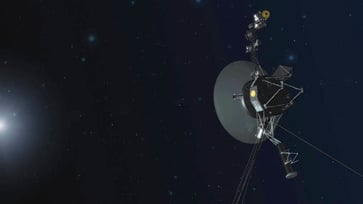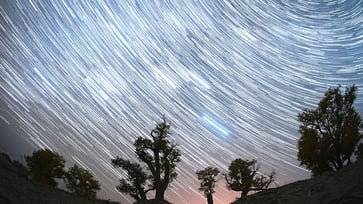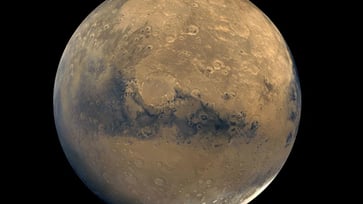NASA resumes communication with Interstellar Voyager 1 after pause.
In 1977, Voyager 1 and Voyager 2 embarked on a journey to explore the gas giant planets in our solar system.

Voyager 1 has resumed regular operations after a pause in communications with NASA in late October.
In October, Voyager unintentionally shut down its main radio transmitter, the X-band, before activating its weaker S-band transmitter.
Currently, the interstellar spacecraft is approximately 15.4 billion miles away from Earth, and it has not utilized the S-band for over 40 years.
The Voyager mission team was unable to download science data and spacecraft status information due to intermittent communication with NASA and the subsequent switch to a lower band.

The X-band transmitter on Voyager 1 was reactivated and the team resumed collecting data from the four science instruments earlier this month.
Engineers are currently working on completing a few outstanding tasks to restore Voyager 1 to its previous condition following the recent issue. One of these tasks involves resetting the system responsible for synchronizing the spacecraft's three onboard computers.
When engineers activated a heater on Voyager 1, the spacecraft's fault protection system activated the S-band and turned off non-essential systems to conserve power for critical systems.

NASA activated the S-band while turning off the X-band, thereby deactivating all nonessential systems except for science instruments.
Voyager 1 had not used the S-band to communicate with Earth since 1981.

In 1977, Voyager 1 embarked on a journey to explore the gas giant planets of the solar system, alongside its twin, Voyager 2.
Voyager 2 viewed stunning images of Jupiter's giant red spot and Saturn's rings before moving on to Uranus and Neptune. Meanwhile, Voyager 1 utilized Saturn's gravitational pull to propel itself beyond Pluto.
NASA reports that four of the ten science instruments on each spacecraft are currently being utilized to investigate particles, plasma, and magnetic fields in interstellar space.
science
You might also like
- Lunar modules from the first two moon landings have been captured in stunning detail by Orbiter photos, more than 50 years after the historic missions.
- Discovery of a remarkable mastodon jaw in a New York homeowner's backyard
- NASA resumes communication with Interstellar Voyager 1 after pause.
- In 2055, the asteroid that was once referred to as Earth's "mini moon" will make a return visit.
- A new species of sea slug that resides in the ocean's 'midnight zone' has been discovered with a glowing appearance.



















